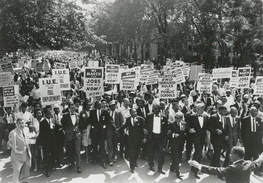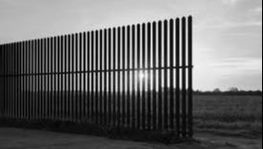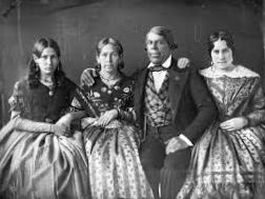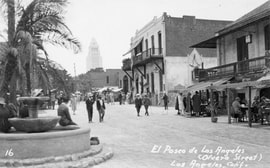Selected Courses

The U.S. Since 1865
“If there is no struggle, there is no progress…Power concedes nothing without a demand. It never did and it never will.”
--Frederick Douglass, 1857
In this course, we will explore struggles for social justice in the United States from the Civil War to the present with an emphasis on issues of racial, class, and gender equality. Our course traces the diverse experiences of the American people while considering how inequality is institutionalized in social, political, and economic structures. We will also analyze how Americans have struggled for a more equitable society at the local and national levels.
“If there is no struggle, there is no progress…Power concedes nothing without a demand. It never did and it never will.”
--Frederick Douglass, 1857
In this course, we will explore struggles for social justice in the United States from the Civil War to the present with an emphasis on issues of racial, class, and gender equality. Our course traces the diverse experiences of the American people while considering how inequality is institutionalized in social, political, and economic structures. We will also analyze how Americans have struggled for a more equitable society at the local and national levels.

Digital History
In this class we will explore the rapidly growing field of digital history, the practice of preserving, analyzing, and disseminating historical information through digital technologies. We will read on and discuss the theories and practices of digital history.
We will then put what we learn into practice by building a digital exhibit based on the history of the U.S.-Mexico borderlands. As anyone who follows the news is aware, the border between the United States and Mexico has become a place of increasing controversy and debate. Through this project, we will explore the historical context of today’s border disputes with an emphasis on the social, economic, and political forces that bring people to the border. Our final product will be an interpretive exhibit with images, narrative, connections to social networking, and space for audience feedback and discussion.
In this class we will explore the rapidly growing field of digital history, the practice of preserving, analyzing, and disseminating historical information through digital technologies. We will read on and discuss the theories and practices of digital history.
We will then put what we learn into practice by building a digital exhibit based on the history of the U.S.-Mexico borderlands. As anyone who follows the news is aware, the border between the United States and Mexico has become a place of increasing controversy and debate. Through this project, we will explore the historical context of today’s border disputes with an emphasis on the social, economic, and political forces that bring people to the border. Our final product will be an interpretive exhibit with images, narrative, connections to social networking, and space for audience feedback and discussion.

Introduction to Public History
In this course students will have the unique opportunity to practice “hands-on” history through researching and curating an entire exhibit that will be hosted at the Pio Pico House at El Pueblo de Los Angeles Historical Monument. Rather than simply reading and discussing history, students will become active participants in creating a historical experience for a public audience.
El Pueblo de Los Angeles, the California State University, Northridge Public History Program, the USC-Huntington Institute on California and the West, and the National Parks Conservation Association are collaborating on a project that will culminate in an exhibit on the role of individuals of African descent in the founding of Los Angeles. While emphasizing the diverse racial, ethnic, and cultural backgrounds of the forty-four pobladores who founded the pueblo on the edge of the Los Angeles River in 1781, the exhibit will also trace the connections between this specific event and the broader history of communities of African descent in Mexico and the American West.
In this course students will have the unique opportunity to practice “hands-on” history through researching and curating an entire exhibit that will be hosted at the Pio Pico House at El Pueblo de Los Angeles Historical Monument. Rather than simply reading and discussing history, students will become active participants in creating a historical experience for a public audience.
El Pueblo de Los Angeles, the California State University, Northridge Public History Program, the USC-Huntington Institute on California and the West, and the National Parks Conservation Association are collaborating on a project that will culminate in an exhibit on the role of individuals of African descent in the founding of Los Angeles. While emphasizing the diverse racial, ethnic, and cultural backgrounds of the forty-four pobladores who founded the pueblo on the edge of the Los Angeles River in 1781, the exhibit will also trace the connections between this specific event and the broader history of communities of African descent in Mexico and the American West.

Narrating the Past for the Public
This course takes students out of the classroom, away from traditional textbooks, and into the rich world of public history. With an emphasis on public history institutions in Southern California, the course will look at how public history institutions present complex and often controversial historical events and themes to public audiences. Our case studies will include the California Missions, American settlement of the west, the creation of Los Angeles’ Spanish “fantasy” past, the internment of Japanese Americans, and American presidential museums and libraries.
